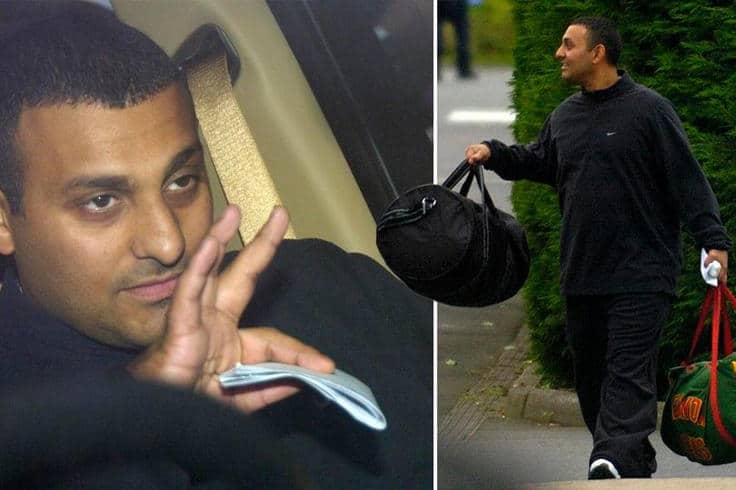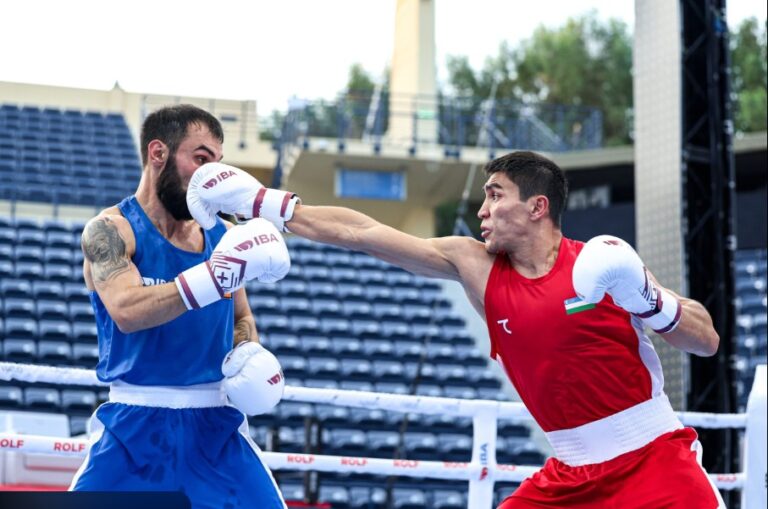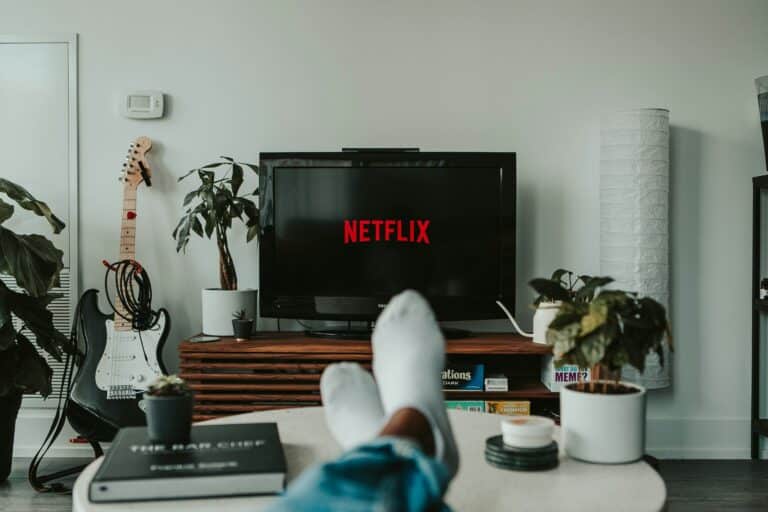
As temperatures rise, UV levels, or ultraviolet radiation, become a growing concern for skin safety and overall health. Understanding the UV index and how to protect yourself from harmful UV exposure is essential, especially during the summer months.
What Is UV Radiation
Ultraviolet (UV) radiation is a type of energy emitted by the sun. While some exposure to UV rays is beneficial for producing vitamin D, vital for healthy bones, immune function and blood cells, excessive exposure can be dangerous. Prolonged or intense contact with UV rays increases the risk of skin damage, premature aging and skin cancer.
Is UV Radiation Dangerous
Yes, UV radiation can be harmful. According to experts, every sunburn contributes to long-term damage. Professor Dorothy Bennett of St George’s, University of London, emphasises that “every exposure to UV, especially every sunburn, increases our risk of skin cancer.” Melanoma, the deadliest form of skin cancer, is now among the most common cancers in the UK. The main culprit? Overexposure to the sun.
UV radiation not only damages skin cell DNA but also contributes to eye conditions like cataracts and accelerates skin aging, causing wrinkles and loosened skin.
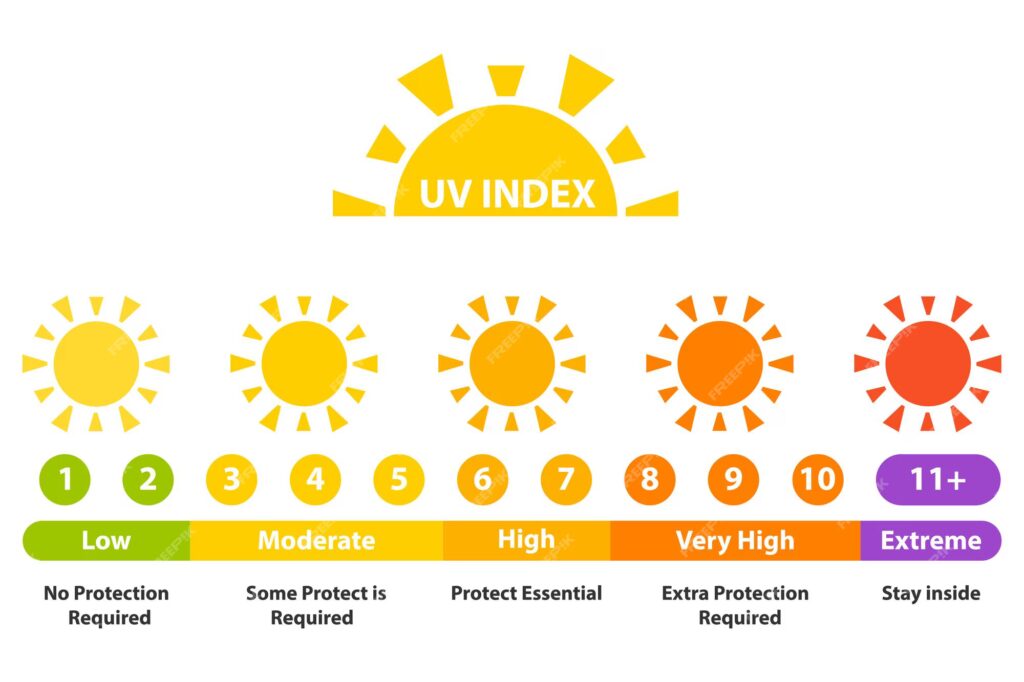
What Is the UV Index
The UV index (UVI) is an internationally recognised scale that measures the strength of ultraviolet radiation at a specific place and time. The scale starts at 0 and can go beyond 10 in extreme cases.
- Low (0–2): Minimal sun protection required.
- Moderate (3–5): Use sun protection if you are outdoors.
- High (6–7): Wear sunscreen, sunglasses, and seek shade.
- Very High (8–10): Extra protection is essential; limit time outside.
- Extreme (11+): Avoid sun exposure as much as possible.
Countries near the equator, such as Kenya, can experience UV levels above 10 year-round. In contrast, the Falkland Islands rarely exceed a UVI of 5, even during summer.
The sun in Uzbekistan can be quite dangerous, especially during the summer months, due to high UV levels and long hours of intense sunlight.
Here’s what makes sun exposure in Uzbekistan risky:
High UV Index in Summer
- In cities like Tashkent, Samarkand and Bukhara, the UV index can frequently reach 8–10 during June, July and August.
- These levels fall into the “very high” category on the UV scale, meaning unprotected skin can burn in as little as 15–25 minutes.
- UV levels are highest between 11:00 and 15:00, especially on clear days.
Geographic Factors
- Uzbekistan’s dry, continental climate and high number of sunny days per year—around 260–300—mean people are often exposed to intense sunlight.
- The low humidity and lack of natural shade in many areas, especially deserts and steppe regions, increase sun exposure risks.
- Compare to Uk august heatwaves that feels very hot because of humidity, Uzbek heatwaves feels not as heavy.
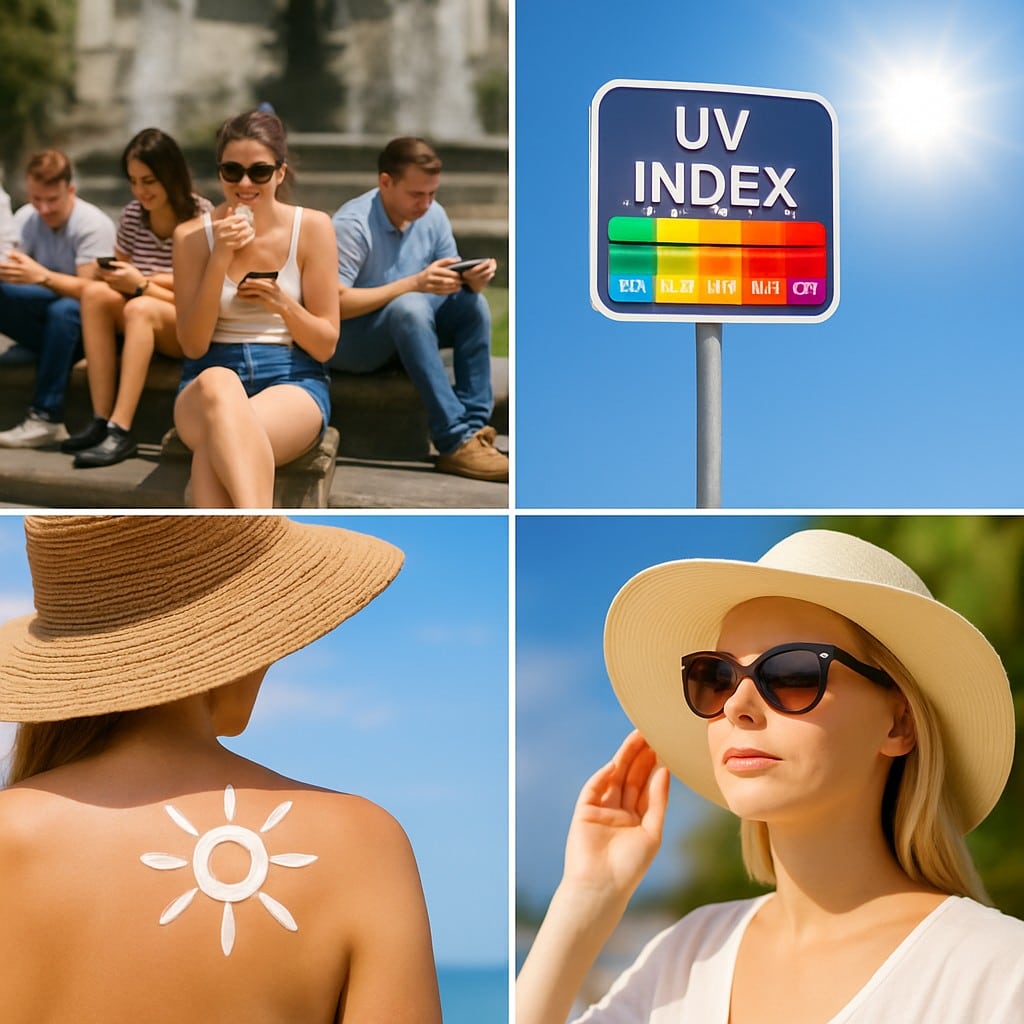
How Can You Protect Yourself from UV Rays
Protecting your skin from UV radiation is crucial, particularly during peak sunlight hours between 11:00 and 15:00. Here are key sun safety tips from the World Health Organization (WHO):
1. Use High-SPF Sunscreen
- Choose broad-spectrum sunscreen with at least SPF 30 and 4-star UVA protection.
- Reapply every 2 hours, especially after swimming or sweating.
- Cover often-missed areas like the side of the nose, temples, and upper chest.
2. Wear Protective Clothing
- Opt for long sleeves, wide-brimmed hats and UV-blocking sunglasses.
- Lightweight fabrics can still offer strong sun protection.
3. Seek Shade
- Stay in shaded areas during peak UV hours.
- Use umbrellas, tents, or trees when outdoors.
4. Protect Children and Babies
- Kids have more sensitive skin and need extra protection, even at moderate UV levels.
- Apply sunscreen, use hats and sunglasses, and avoid direct sun exposure.
Why UV Awareness Matters
Understanding UV levels and following basic sun protection strategies can significantly reduce the risk of sunburn, premature aging and skin cancer. Whether you’re at the beach, enjoying a picnic, or simply walking outdoors, staying informed about the UV index and taking preventive measures is a smart way to protect your health year-round.
Kursiv Uzbekistan also shares medical advices how to survive heatwave in Uzbekistan.




